Indicators and Signals—Understanding Technical Analysis Indicators
This module introduces the principles and practical applications of common technical indicators, including trend, momentum, and volatility indicators. You will learn how to interpret market signals, identify potential entry and exit points, and make data-driven trading decisions.
Why Use Technical Indicators
Technical indicators are mathematical tools derived from historical price and volume data. They help traders assess trend direction, market strength, and potential trading opportunities. In the highly volatile crypto market, relying solely on “gut feeling” or intuition often leads to inconsistent results. Indicators help extract meaningful patterns from chaotic price movements.
The key benefits of using indicators include:
- Providing quantifiable and objective signals for decision-making;
- Helping identify trends and reversals;
- Indicating overbought and oversold conditions;
- Confirming price movements or revealing divergences between price and momentum.
However, indicators are not prediction tools—they are reaction tools. They reflect past and present market behavior, not guaranteed future outcomes. Understanding this distinction is the first step to using indicators effectively.
Categories of Technical Indicators
Based on their calculation logic and purpose, technical indicators can be broadly divided into three categories: trend, momentum, and volatility indicators. Each serves a unique role and applies to different market conditions.
1. Trend Indicators
These indicators help determine whether the market is in an uptrend, a downtrend, or a sideways range. Key examples: Moving Average (MA), Exponential Moving Average (EMA), and MACD (Moving Average Convergence Divergence).
• Moving Average (MA): Smooths out price fluctuations to reveal the trend direction.
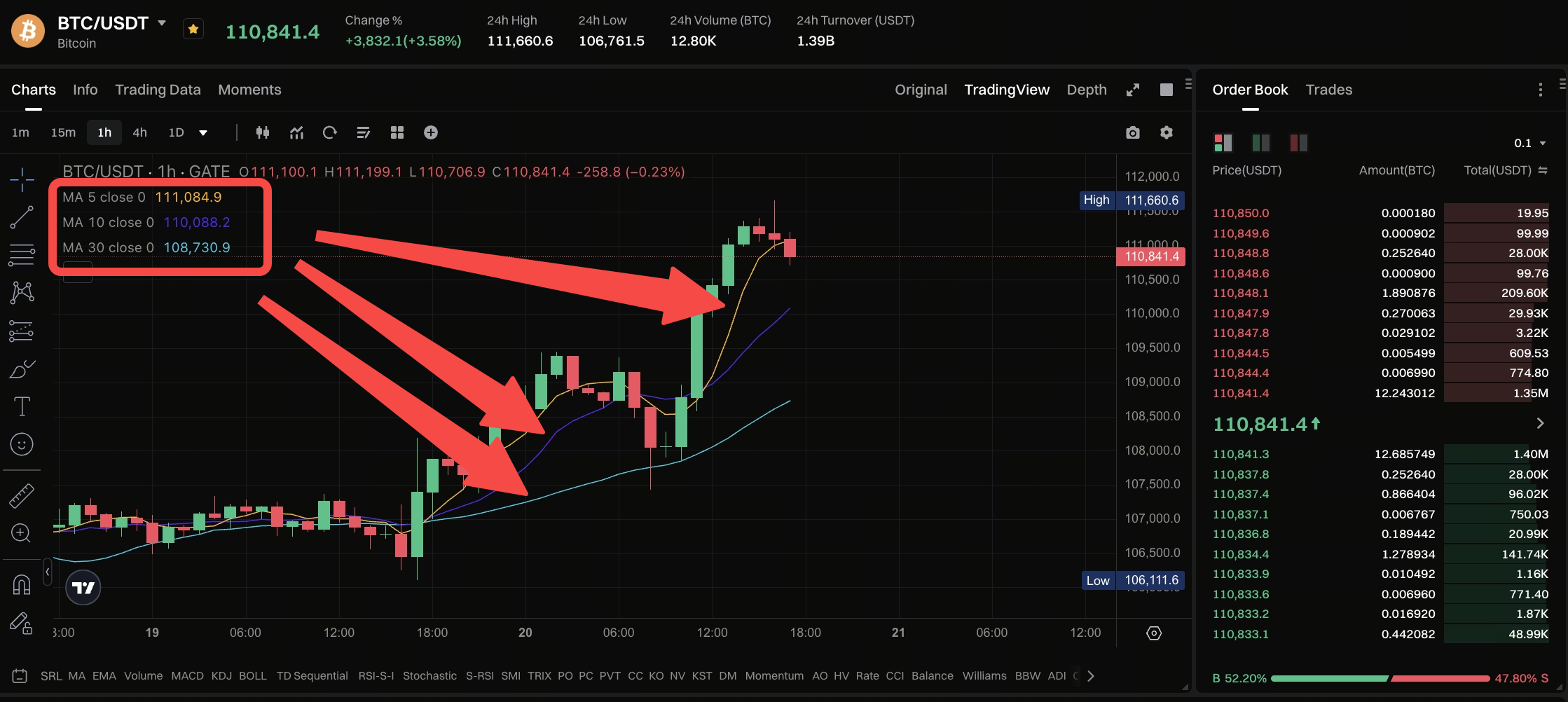
○ Price above the MA → bullish trend
○ Price below the MA → bearish trend
Common setups: MA5, MA20, MA60.
• MACD: Calculated from two EMAs to identify trend strength and potential reversal signals
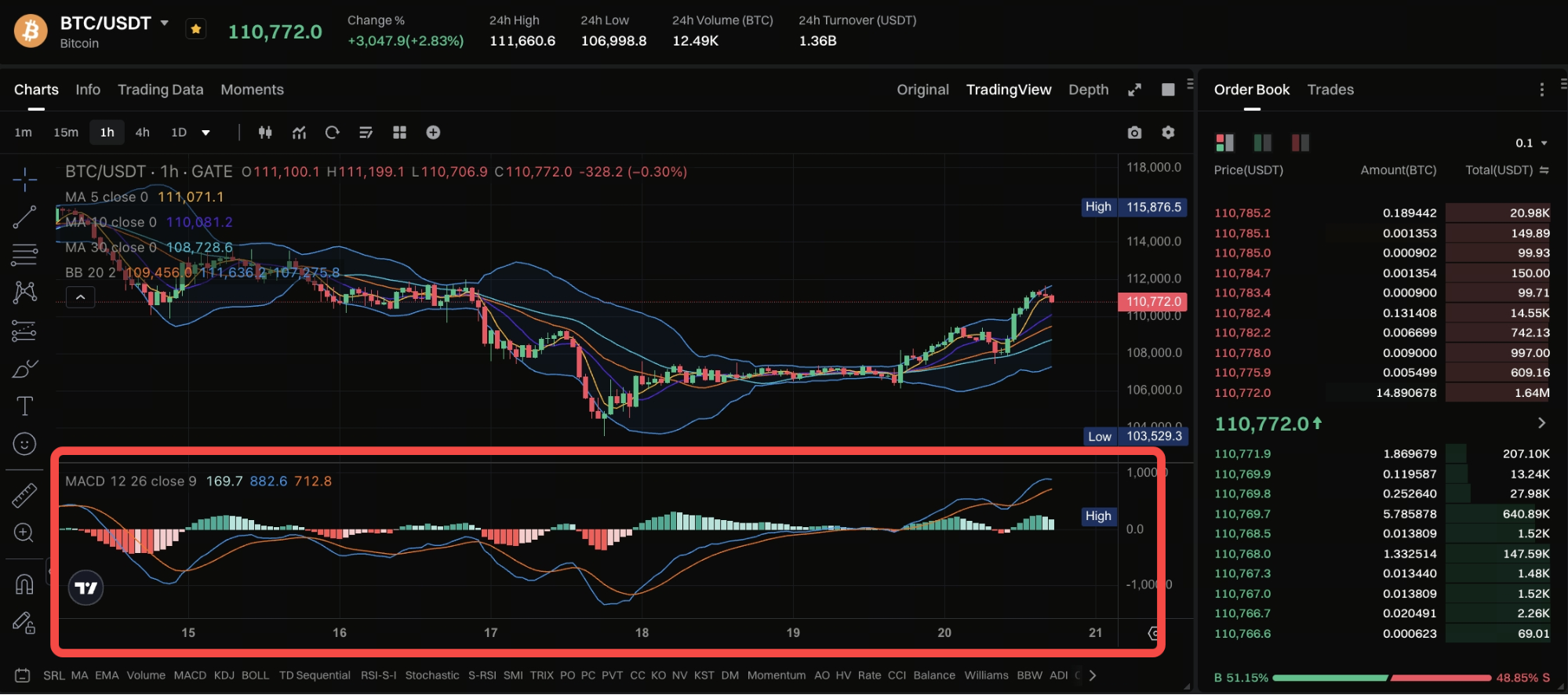
○ Difference line (DIF) crosses above signal line (DEA) → buy signal
○ DIF crosses below DEA → sell signal
The histogram (red/green bars) represents momentum strength—expanding red bars indicate growing bullish momentum.
2. Momentum Indicators
Momentum indicators measure the speed of price movement, helping traders identify whether the market is overbought or oversold.
Key examples: RSI (Relative Strength Index) and Stochastic Oscillator.
• RSI:Ranges from 0 to 100.
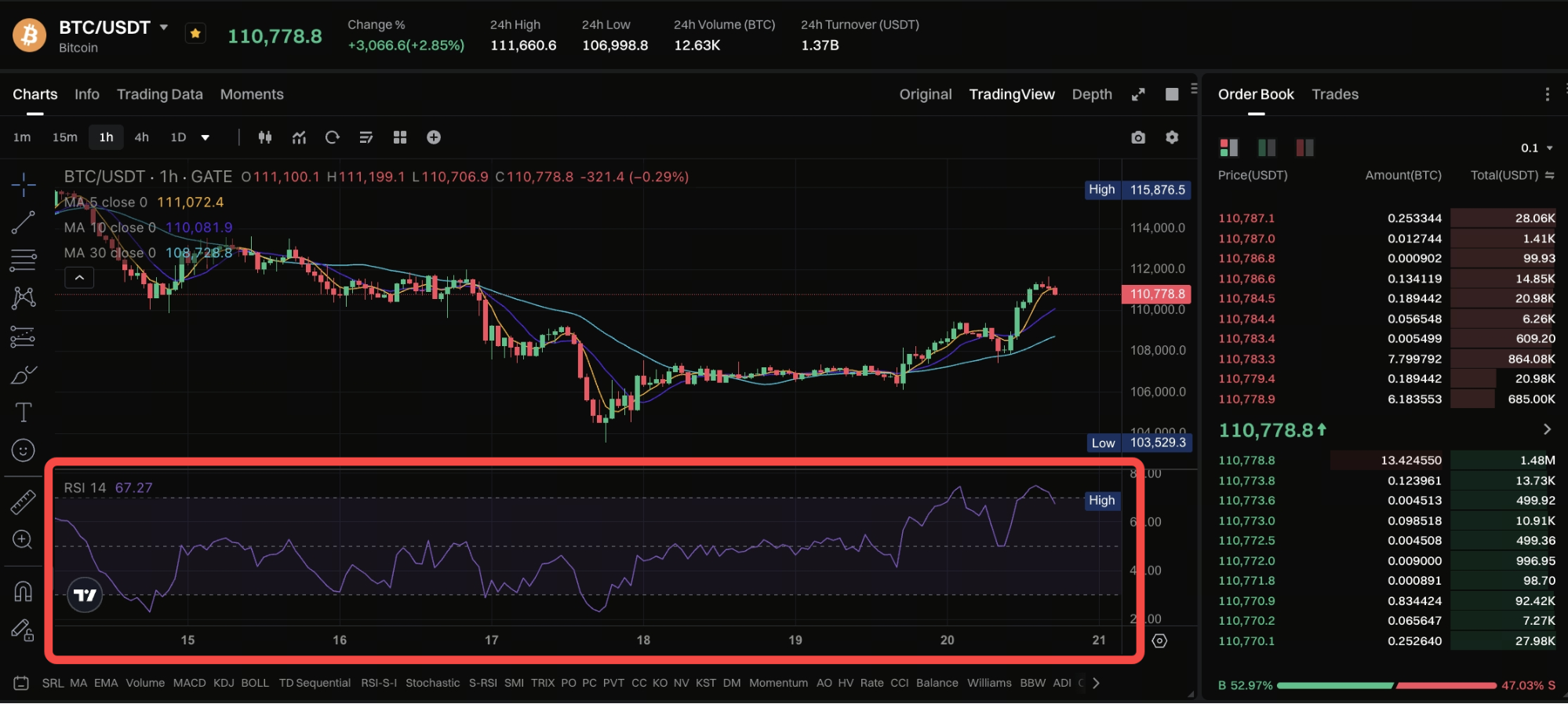
○ RSI > 70 → market overbought, indicating possible correction
○ RSI < 30 → market oversold, indicating possible rebound
RSI is best used as a confirmation tool for momentum and sentiment, rather than a standalone signal.
• Stochastic Oscillator: Compares the current closing price to its recent price range to gauge momentum.
○ %K crosses above %D → buy signal
○ %K crosses below %D → sell signal
3. Volatility Indicators
These indicators measure the degree of price fluctuation and market uncertainty. Key examples: Bollinger Bands and ATR (Average True Range).
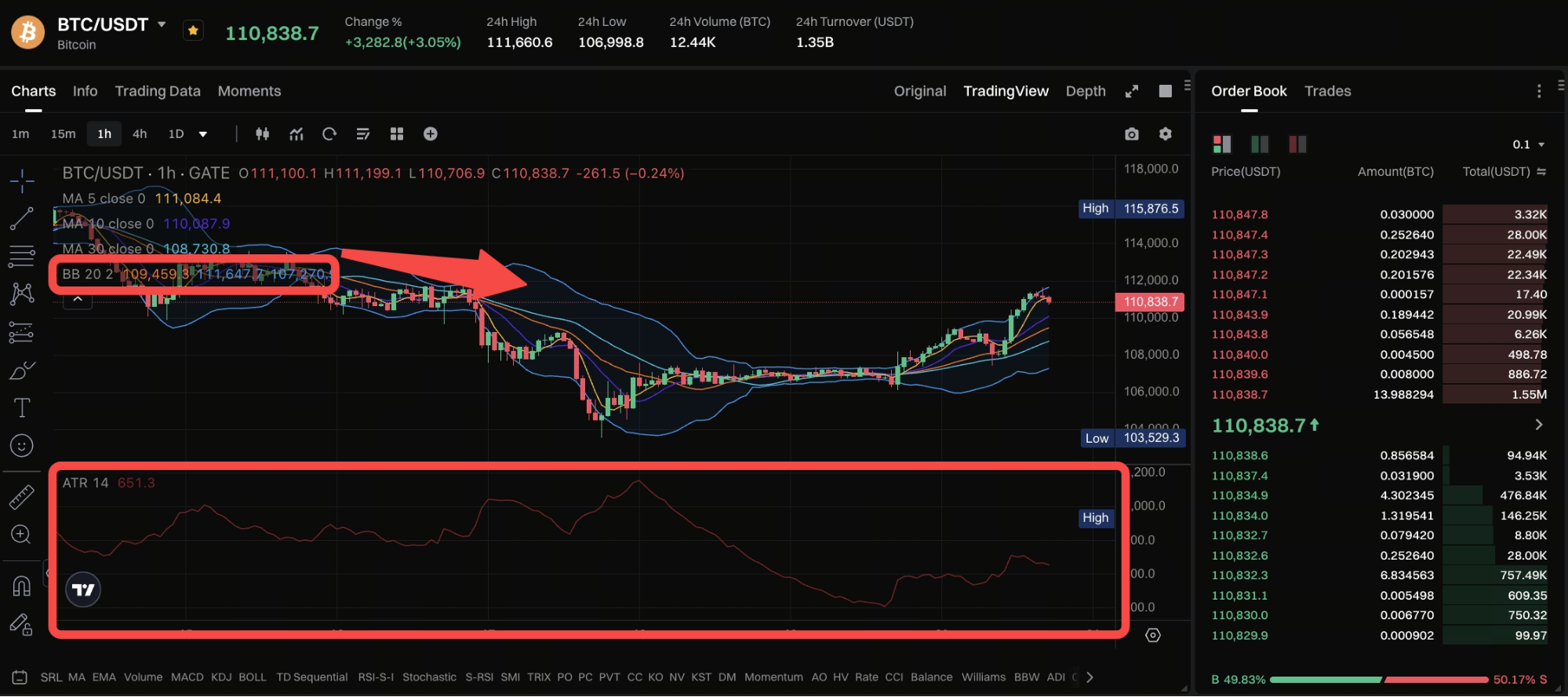
• Bollinger Bands: Consists of a middle band (MA) and two outer bands based on standard deviation.
○ Price hits the upper band → potential overbought condition
○ Price hits the lower band → potential oversold condition
○ Bands widening → increasing volatility
○ Bands narrowing → consolidation phase
• ATR:Measures overall market volatility without indicating direction. A higher ATR means stronger price movement—useful for setting stop-loss levels and position sizing.
Combining Indicators
In practice, a single indicator rarely provides a complete picture.
Skilled traders combine multiple indicators to improve signal accuracy.
Common combinations include:
1. Trend + Momentum Combination
○ Trend indicators determine the market direction (e.g., MA, MACD).
○ Momentum indicators confirm the strength of the move (e.g., RSI, Stochastic).
Example: When the price is trading above the MA60 (uptrend) and the RSI rises from 40 to 60, it suggests strengthening bullish momentum and a potential long opportunity.
2. Trend + Volatility Combination
○ Trend indicators identify the direction.
○ Volatility indicators help assess risk and timing.
Example: During an uptrend, if the price pulls back to the lower Bollinger Band with decreasing volume, it often signals a low-risk buying area.
3. Multi-Timeframe Confirmation Cross-check indicator signals across different timeframes:
○ Daily uptrend + 4-hour MACD golden cross → medium-term confirmation
○ 1-hour RSI rebound from oversold → short-term entry signal.
The key to combining indicators is complementarity, not redundancy. Avoid using two indicators that convey the same information (e.g., MACD and dual MAs), as this may create overlapping or redundant signals.
Common Pitfalls When Using Indicators
- Overreliance on indicators: Indicators are derivatives of price and reflect historical data. Ignoring market structure (such as support, resistance, and trendlines) can lead to lag traps.
- Ignoring market context: RSI overbought does not always mean a coming drop. In strong uptrends, RSI can stay high for extended periods. Always interpret signals within the trend context.
- Using too many indicators: New traders often overload charts with a dozen indicators, leading to conflicting signals. Stick to 2–3 combined indicators: one trend indicator, one momentum indicator, and one volatility indicator.
- Neglecting volume confirmation: Volume is crucial for validating indicator signals. Any signal lacking volume support tends to be less reliable.
Practical Example: BTC Indicator Signal Analysis
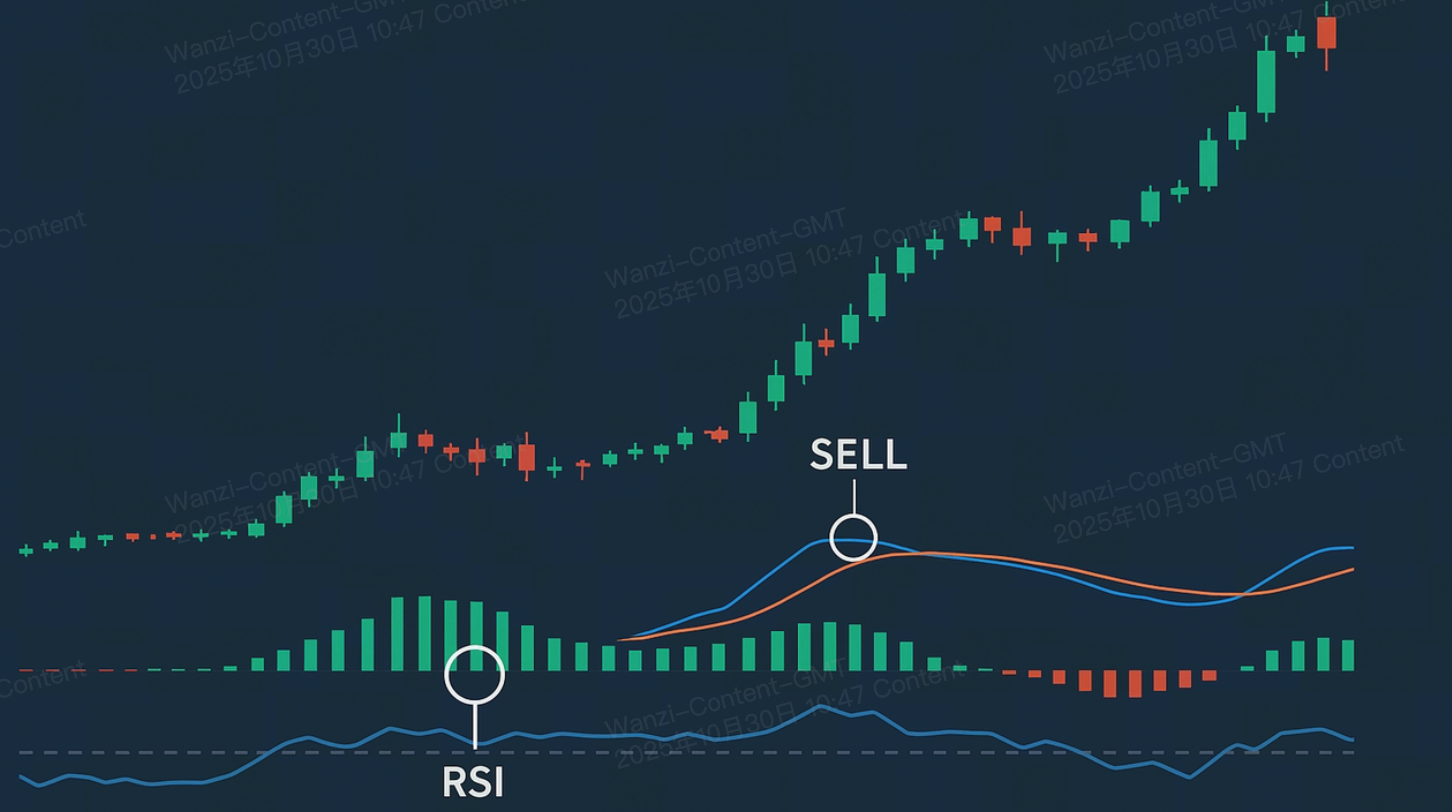
At one stage in 2025, BTC broke out from $60,000 to $70,000:
- MA20 crossed above MA60, forming a golden cross;
- RSI rebounded from 50 to 68, indicating strengthening momentum;
- The upper Bollinger Band widened, suggesting increasing volatility.
The confluence of these signals indicates a strong uptrend. Traders may consider building positions gradually or following the trend. Conversely, when RSI rises above 75 and MACD shows divergence (price makes a new high while the indicator does not), it signals weakening momentum and a potential pullback risk.
How to Build Your Own Indicator System
Every trader should develop an independent indicator system based on their timeframe and risk tolerance.

The key is not to have more indicators, but to have clear logic. A well-designed system allows you to always know what to do, what to wait for, and what to avoid, no matter what the market conditions are.





